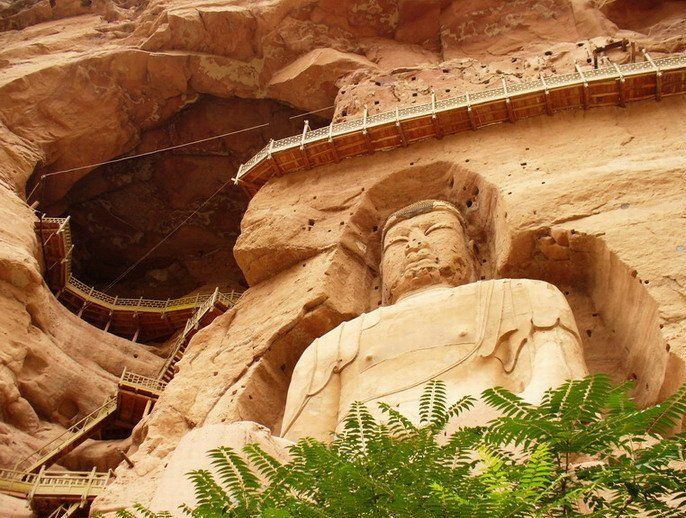CNTV.com 12 July 2014 For a video, click HERE
Time and nature are not the only challenges facing the sites along the ancient silk road. Human activity can be a threat too. The question is how to keep the authenticity and completeness of the heritage sites in the course of urbanisation and economic development.

The Bingling Temple Grottoes in northwest China's Gansu Province is one of five Grottoes in the country. The heritage site boasts a history of 1,600 years, and is filled with Buddhist sculptures carved into natural caves and caverns along the Yellow River.
The Bingling Temple Grottoes in northwest China's Gansu Province is one of five Grottoes in the country. The heritage site boasts a history of 1,600 years, and is filled with Buddhist sculptures carved into natural caves and caverns along the Yellow River. It lies about 35 kilometers north of where the Yellow River empties into a reservoir.
The reservoir, which was built in the 1960s, posed a serious threat to the heritage site. A Buddhist sculpture at a lower place was in danger of being flooded, before the authorities moved it to a museum.
Archaeologist Shi Jinsong said, "The original location of the Buddhist sculpture is 15 meters below us. We moved it before the water rose. Some 30 years later, we were able to repair it. And in 2001 we put the sculpture here. "
The Bingling Temple is both stylistically and geographically a midpoint between the monumental Buddhas of Bamiyan in Afghanistan, and the Buddhist Grottoes of central China. It is a good example of the communication among different cultures along the ancient silk road. The sculptures, carvings, and frescoes that remain are outstanding examples of Buddhist artwork. And there is much to be done to protect them.
Archaeologist Cai Chao said, "The reservoir nearby affects the humidity of the Bingling Temple Grottoes. We have examined some frescoes and found that the color has changed a lot from what it was 20 years ago. Something must be done before the situation worsens."
The good news is that local authorities are working with archaeologists to address the issue. A system has been set up to monitor the humidity of the environment and the condition of the Bingling Temple Grottoes.
No comments:
Post a Comment